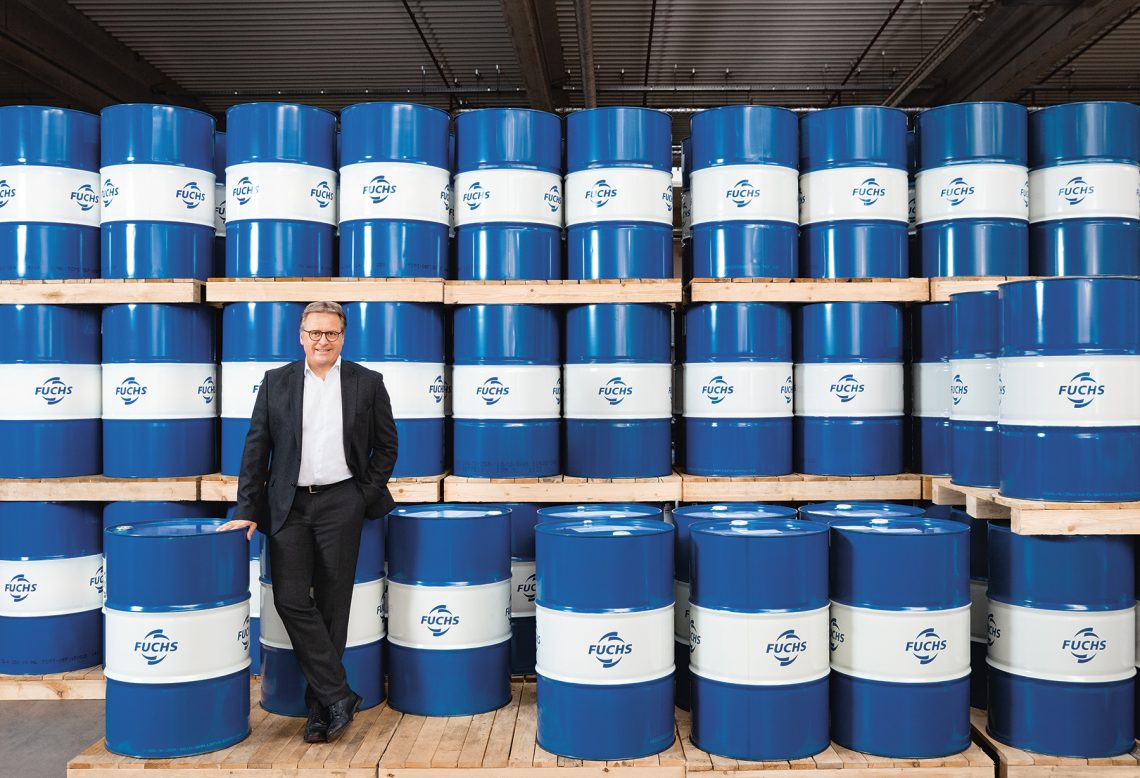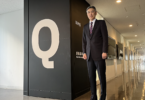Like many successful traditional companies, the FUCHS Group, a 91-year-old German global company, is known for innovating around its core product. The family-run business, headed by Stefan Fuchs (pictured here) has become the world’s largest independent manufacturer of lubricants for a wide variety of industries and applications, with 6000 employees, 57 operating subsidiaries and 2021 revenues of €2.9 billion.
But that is no longer enough.
“We are great at technical and product innovation and forecasting challenges in our industry but now we see challenges arising that are not related to lubricants,”, says Rouven Acquaviva, FUCHS Group’s Head of Corporate Strategy and Innovation.
In addition to supply chain issues caused by COVID and other factors, FUCHS is grappling with digitalization, how to become more sustainable, and major changes in markets it serves, such as new mobility and the auto industry’s transition to electric and autonomous vehicles.
The company realized it needed to build an innovation process that will help it anticipate and adapt to change. “We are reshaping the organization to generate a target picture of where FUCHS wants to be in the future and what we need to do to make that future happen and that includes new ways of working and agile development,” says FUCHS Group Chief Digital Officer Matthias Marquart.. “Digitalization is not only about new technologies, it’s about enabling change that comes along, having the right people who will help bring in more ideas and spot new opportunities and then bringing these things to light,” he says.
FUCHs is a great example of a family-run enterprise that has started developing an operating system for innovation, says Leopold von Schlenk-Barnsdorf, head of UnternehmerTUM’s new FamilienUnternehmerTUM program, which was recently established to help family enterprises cope with digital transformation and sustainability. Family-run enterprises tend to be more opportunistic in their approach to innovation, mostly focusing on traditional products and incremental change, says Schlenk-Barnsdorf, who is involved in the digital transformation of his own family’s business.
In addition to developing various ways to make the most of its internal talent and adopt new business models FUCHS Group also wants to embrace open innovation, so it is working with the FamilienUnternehmerTUM program to tap into UnternehmerTUM’s and the Technical University of Munich’s entrepreneurship network of startups, VCs, experts and IT talent. “We want to be more open to other ecosystems and ideas and to find solutions to problems we may not even see,” says Acquaviva.
Creating An Operating System For Change
The company began its digital transformation in 2016. It built a dedicated think tank to explore options and started prototyping. “There was a steep learning curve,” says Marquart. The company tried to implement change from the bottom up. “We thought if we built lighthouse projects it would excite the organization, but the reality is that didn’t happen,” he says. It soon learned that some things must be top-down, says Marquart. Now FUCHS Group combines both approaches. One example is the development of a digital strategy: once senior management develops strategic directives the information was communicated to other levels of the company. Employees from different backgrounds, entities and hierarchies were then assembled, into teams of six, and asked to come up with a list of initiatives to help the company achieve its digital objectives. “We were not talking about ‘nice to haves’,” says Marquart. “We were asking them to really reflect on our day-to-day processes and how we interface with customers.” Rather than only asking the management, the company also connects directly to employees and clears the path for them to develop ideas about what the company should do from their perspective.
While the outcome of this new procedure has not yet been communicated internally Marquart says some 80% of its employees’ ideas will be brought to life. “If you want to drive innovation you have to involve all areas of the business,” he says.
Marquart’s own role fuses that of a Chief Digital Officer and a Chief Information Officer. His job is to both oversee the day-to-day operations of the company’s global network and ensure that technology helps FUCHs execute its business goals. He is part of a quadrumvirate of key stakeholders at the Group level who are collectively driving and stimulating innovation at the top. The others are Acquaviva, who oversees corporate innovation in the context of future business models and mindset change, the VP of Research and Development, and Product Management, where in addition a newly defined role for smart solutions and services is located. “
“The four of us are tasked with providing a framework for innovation,” says Acquaviva. “You can’t force innovation, you have to enable it,” he says. “That means setting the groundwork and baseline for stuff to happen.”
FUCHS has appointed innovation managers at the local level to help introduce new ways of doing business. Local entities are not judged on the number of ideas they produce. “Innovation is not something you can plan,” says Marquart. “You have to let things flow and that times time, sitting together and ideating and trying to better understand the customers.”
It is not about KPIs, he says. “It is about establishing processes and structures that support innovative ideas.” But that’s doesn’t mean that it is impossible to measure progress. For FUCHS it is more about budgeting and allocating time and resources to enable the development of new ideas.
Developing New Business Models
FUCHS Group is deeply involved in its customers’ processes and wants to use that as a lever to develop new services and business models, says Acquaviva. The company already offers services around chemical process management, which involves having employees on-site on customer premises to manage lubricants and it believes there is an opportunity to develop other business models.
Ideas include retaining product ownership to enable a circular economy approach to lubricants and help customers reduce their environmental impact, says Acquaviva.
The company is also trying to leverage machine learning technology to transform the company’s R&D knowledge into services, says Marquart. “We have a lot of knowledge – the question is how to use that knowhow from the analog world and transfer that into services,” says Marquart. “We have people working at customers sites maintaining the lubricants. They have a lot of data and knowhow on how to analyze the quality of products. We want to marry machine learning data and internal data to inform and optimize the way we design products. The big issue is having mechanical engineers based at the customer sites communicate with chemists. There is huge potential in using machine learning as a bridge between them to support the formulation of new services and products. We are not there yet but we are getting closer every day.”
Embracing Open Innovation
The tie-up with UTUM is a realization that the company additionally needs new perspectives to stay ahead of the curve, says Acquaviva. “We want to take a broad view,” he says. “We are not looking for incremental product innovation we want to develop smart customer-focused solutions and products.”
The company is examining what type of innovation methods it should employ to better understand and map customer journeys. That is why FUCHS Group says it started working with the FamilienUnternehmerTUM program to foster open innovation. As part of its work with the entrepreneurship center it is launching an internal intrapreneurship program across all of the countries it operates in to solicit innovative ideas. The three winners will be sent to a FamilienUnternehmerTUM program boot camp.
The FamilienUnternehmerTUM program wants to serve as a sparring partner, to challenger FUCHS Group’s status quo, offer them different perspectives, and help connect them to startups and experts who will bring in innovation from the outside, says Schlenk-Barnsdorf.
“To anticipate new challenges, we need to be open to other ideas and other ecosystems.” says Acquaviva, who worked as an intern at FUCHS Group in 2008. He returned in 2014 and worked in the company’s Singapore offices before being transferred to the headquarters in Mannheim, Germany. He was initially not enthusiastic about working in the head office because, he says, it was too formal and traditional. “People had to wear ties to the office,” he says. “There has been quite a big change in a very short time. Now we have design thinking rooms for co-creation.” It is not just innovation theatre, he says. “Our biggest success has been a real cultural change. There is still a lot of room to grow and improve but we have come a long way.”
![]()
For more about Unternehmertum’s program for family-run businesses click here.
This article is content that would normally only be available to subscribers. Sign up for a four-week free trial to see what you have been missing.
–







